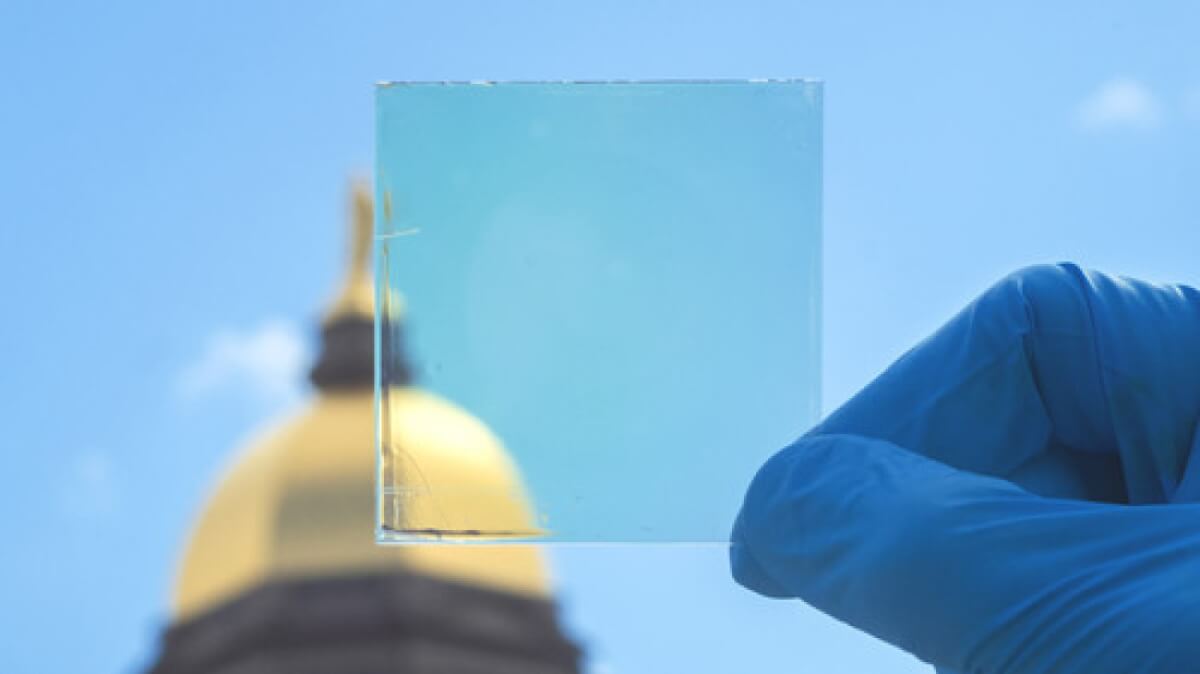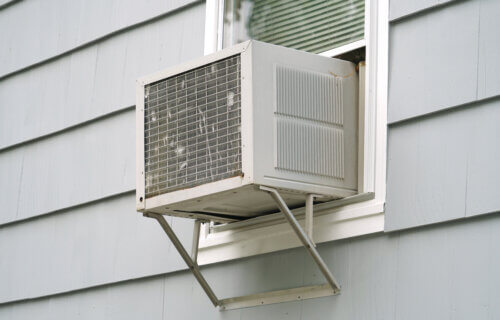NOTRE DAME, Ind. — Windows bring much-needed natural sunlight into our homes, but with those UV rays also comes unwanted heat. Now, however, a new window coating developed at the University of Notre Dame appears capable of blocking heat-generating ultraviolet and infrared light while allowing visible light to pass through. Researchers add the coating may be applicable to existing windows or car windshields, significantly lowering air-conditioning bills.
In fact, the Notre Dame team estimates that summer cooling costs could drop by more than a third in especially hot climates.
“The angle between the sunshine and your window is always changing,” says Tengfei Luo, the Dorini Family Professor for Energy Studies at the University of Notre Dame and the lead of the study, in a media release. “Our coating maintains functionality and efficiency whatever the Sun’s position in the sky.”
Window coatings seen in various recent studies underwent optimization specifically for light entering a room at a 90-degree angle. However, at noon, which is usually the hottest time of the day, the Sun’s rays enter vertically installed windows at oblique angles.

So, Prof. Luo and his postdoctoral associate Seongmin Kim put together a transparent window coating through the stacking of ultra-thin layers of silica, alumina, and titanium oxide on a glass base. Then, they added a micrometer-thick silicon polymer in order to enhance the structure’s overall cooling power through the reflection of thermal radiation through the atmospheric window into space.
Moreover, further optimization of the order of the layers was necessary to ensure the coating would accommodate multiple angles of solar light. Still, a trial-and-error approach was not practical, researchers explain, due to the immense number of possible combinations.
Study authors used quantum computing, or more specifically, quantum annealing, before validating the results experimentally. This approach shuffled the layers into an optimal configuration, or one maximizing the transmission of visible light while also minimizing the passage of heat-producing wavelengths.
The model ended up producing a coating that both maintained transparency and reduced temperatures by 5.4 to 7.2 degrees Celsius (9.72 to 12.96 degrees Fahrenheit) in a model room. This remained true even after light underwent transmission across a broad range of angles.
“Like polarized sunglasses, our coating lessens the intensity of incoming light, but, unlike sunglasses, our coating remains clear and effective even when you tilt it at different angles,” Professor Luo concludes.
In conclusion, researchers believe the active learning and quantum computing scheme developed during this work to facilitate the creation of this coating may help with additional designs for a broad range of materials with complex properties.
The study is published in the journal Cell Reports Physical Science.

This is nothing new. Low E2 windows do exactly that….depending on the Solar Heat Gain Factor of the window.
What are the costs to the environment/climate of the manufacture of the coating?
Does it negate any of the gains?
Can it be retrofitted? Window owners would like to know.
On studies like this an estimate of when a product might be available would be useful.
April 2124: At last! A smart window coating that controls heat transfer and converts what it captures into electricity.